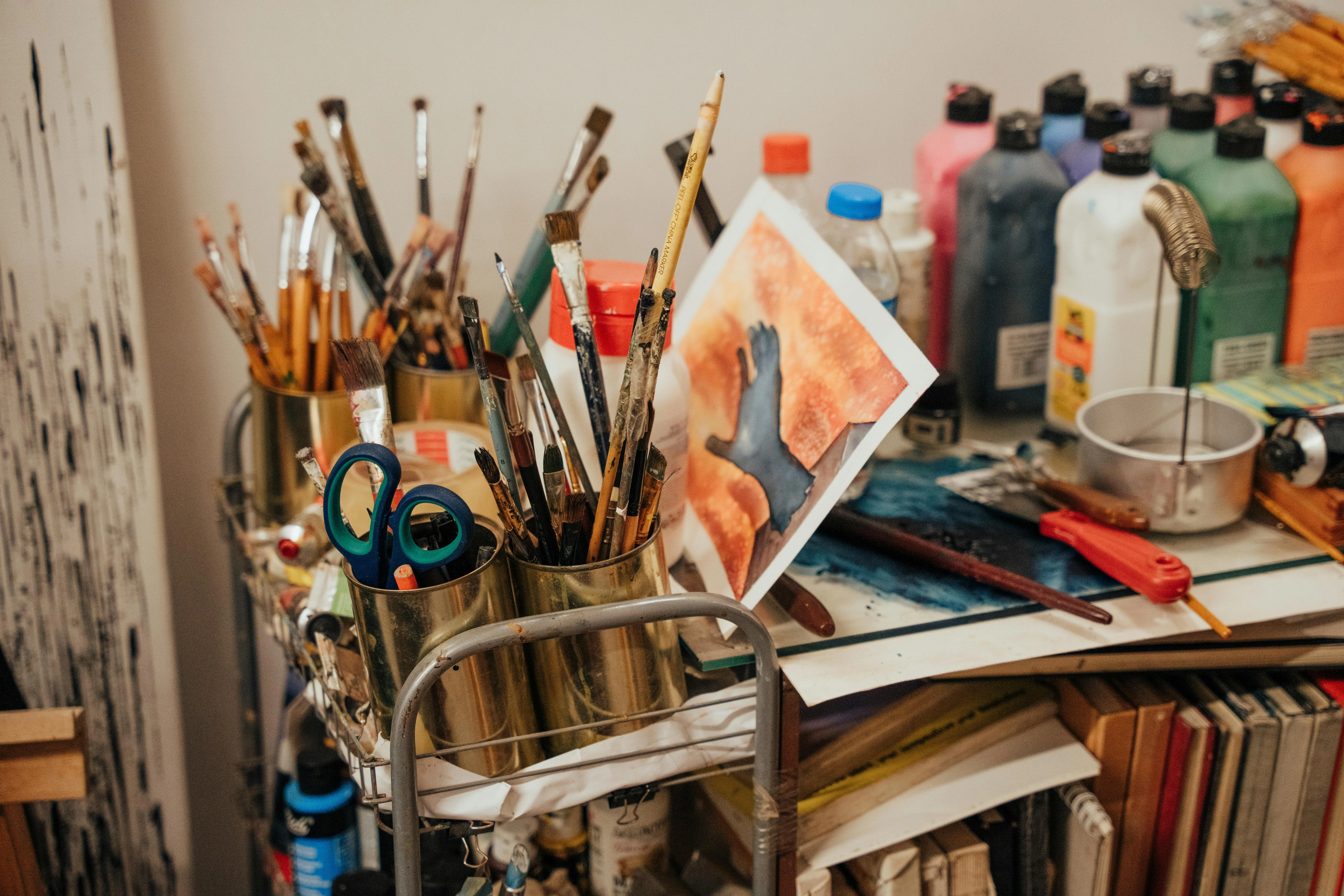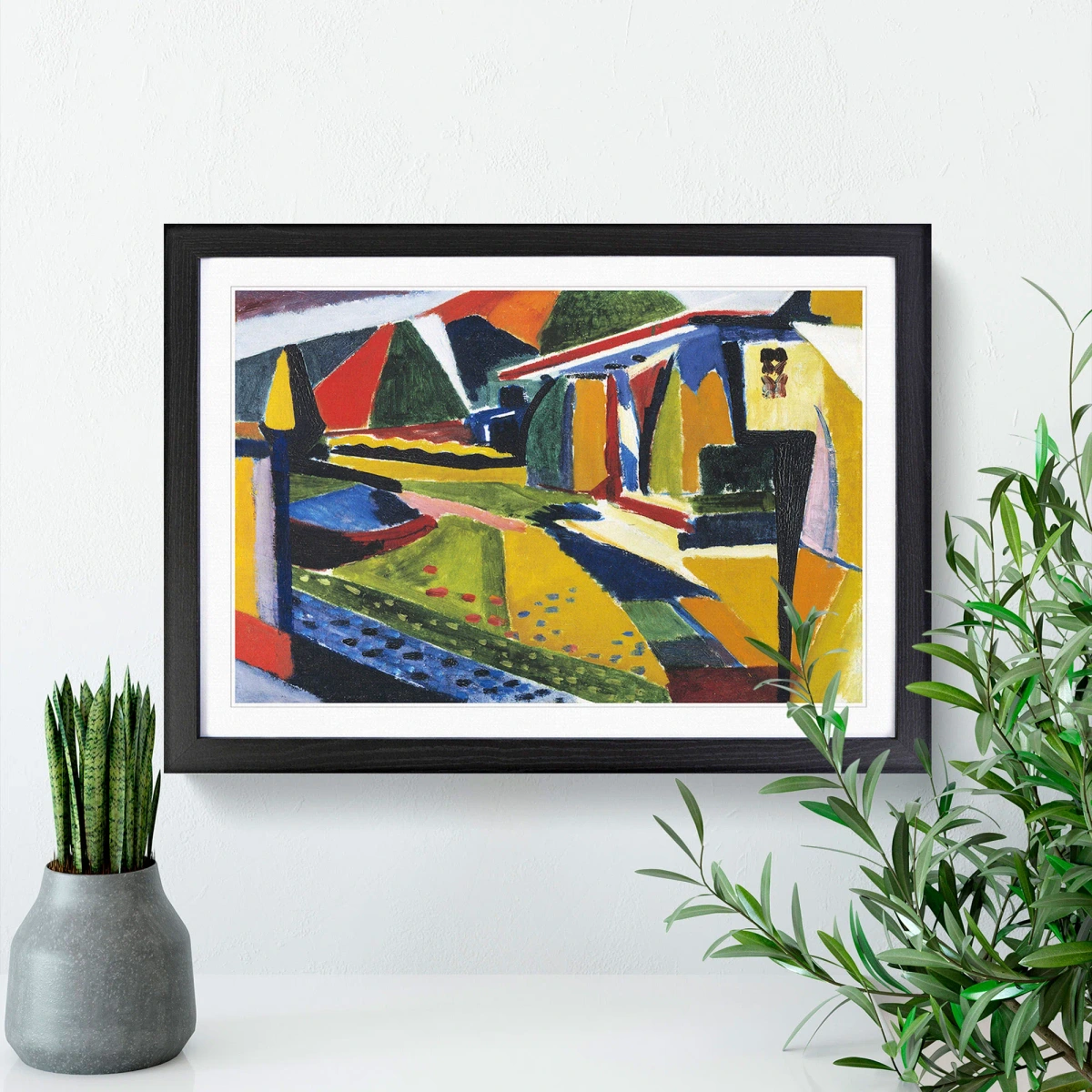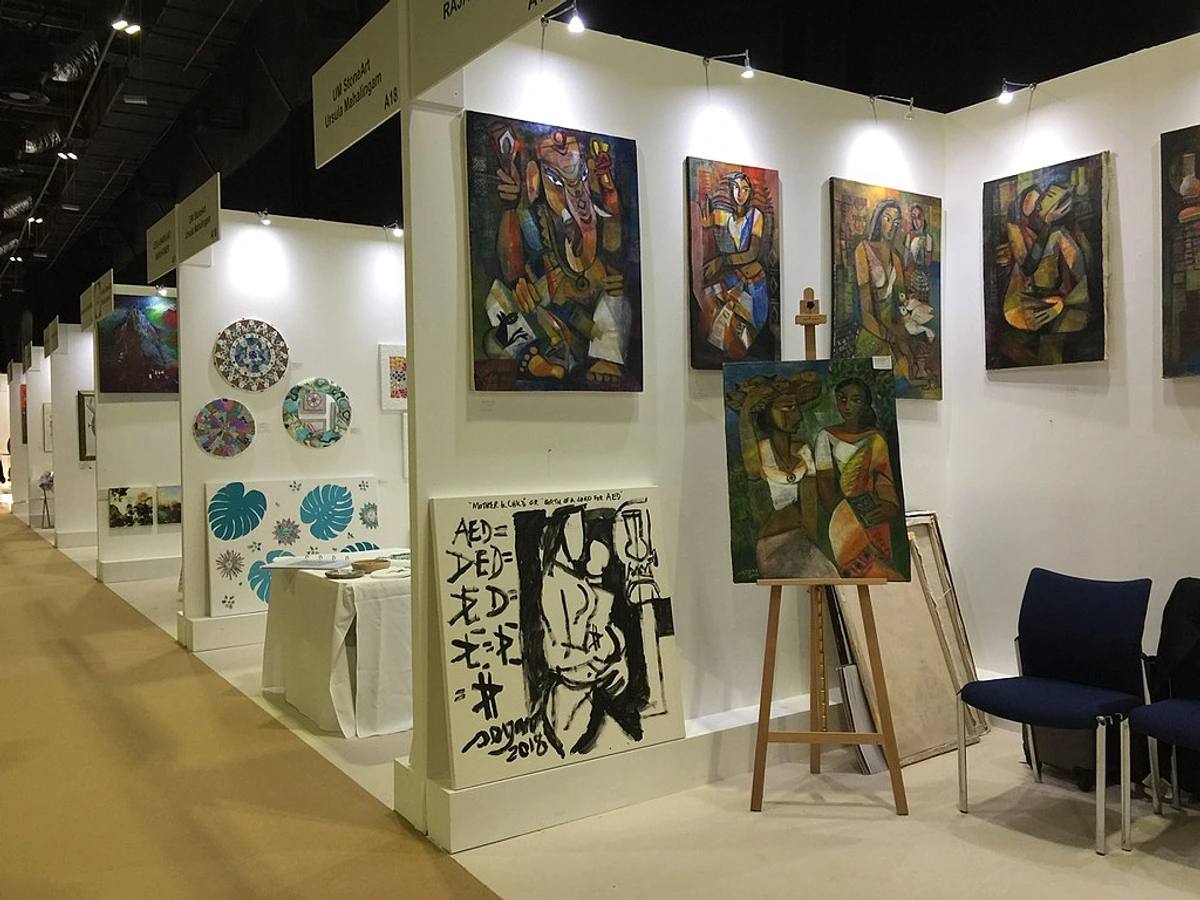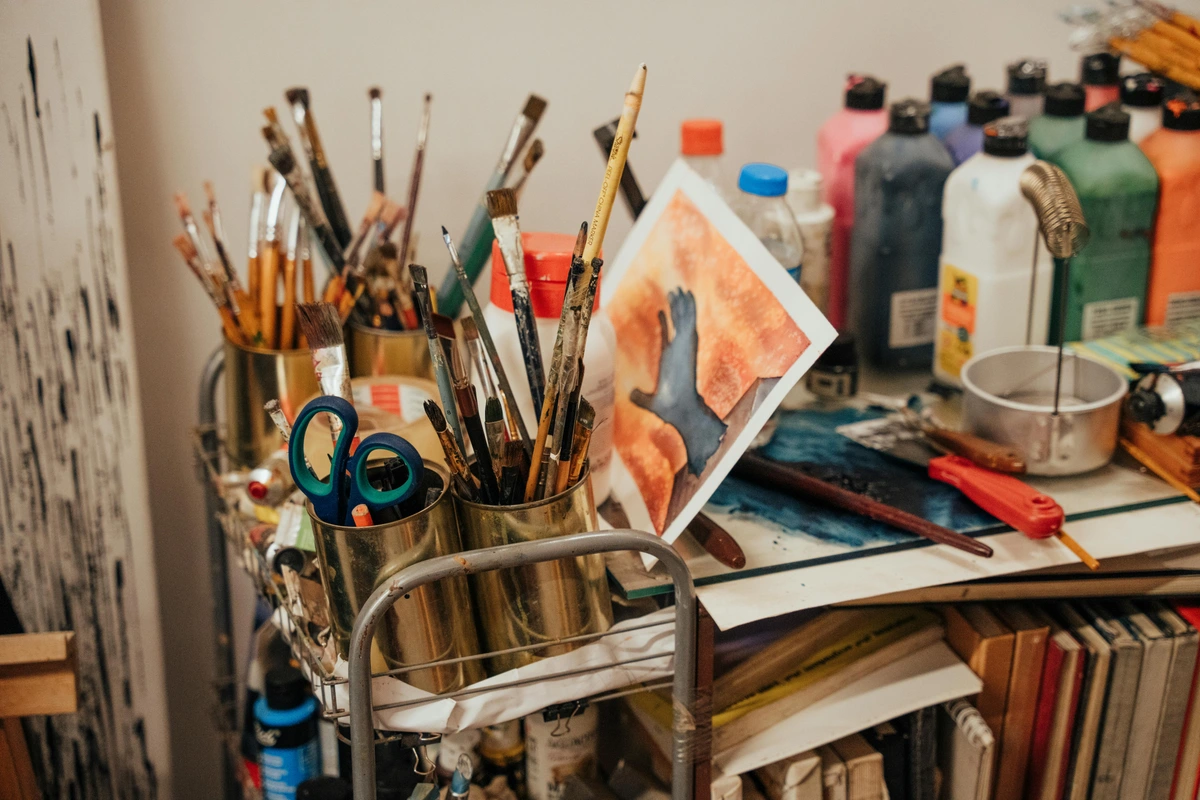
How to Choose the Perfect Art Gift | Expert Tips & Ideas
Struggling to find the perfect art gift? Our ultimate guide covers recipient taste, art styles, budget, where to buy contemporary pieces, & presentation tips.
The Ultimate Guide to Choosing the Perfect Art Gift
Gifting art is a profound gesture. Unlike fleeting trends, a carefully chosen piece of art can resonate for years, becoming a cherished part of someone's life and home. It speaks volumes about your consideration for their personal taste and offers a daily dose of beauty or intrigue. However, the very subjectivity that makes art special can also make it a daunting gift to choose. How do you select something personal for someone else?
This comprehensive guide is here to demystify the process. We'll walk you through understanding the recipient, exploring art options, navigating practicalities, and ultimately, finding a perfect art gift that truly connects. Art has the power to transform a space, learn more about How to Decorate Your Home: Simple Steps for a Stylish Space, and giving it as a gift shares that transformative power.
Phase 1: Understanding the Recipient - The Heart of the Matter
This is the most crucial step. The perfect art gift isn't about your taste, but theirs. Become a thoughtful observer:
Their Personal Style & Taste
- Home Decor Clues: Look at their home environment. Is it minimalist, bohemian, traditional, industrial, or bursting with color? The art should ideally complement their existing aesthetic. Check out tips on How to Decorate a House: Step-by-Step Guide for Beginners.
- Fashion Sense: How do they dress? This often reflects their colour preferences and overall style – bold and graphic, or subtle and classic?
- Interests & Passions: What do they love? Nature, architecture, travel, abstract concepts, specific colours? Art reflecting these interests shows deep consideration. Finding inspiration to make art often comes from these passions.
- Gather Intel Subtly: Listen during conversations, browse their social media (discreetly!), or ask indirect questions about colours, styles, or artists they might admire. If unsure how to pinpoint their style, read about How to Define Your Personal Art Style and Taste: A Discovery Guide.
Their Living Space
- Space & Scale: Where might the art live? Measure potential wall space. A tiny piece can get lost on a large wall, while oversized art might overwhelm a small room. Learn the basics of How to Decorate a Wall: Ultimate Guide with Ideas & Tips. This applies whether they live in a spacious house or need ideas for How to Decorate an Apartment: Stylish Ideas for Renters & Small Spaces.
- Room Function & Palette: Consider the room's purpose (e.g., relaxing bedroom vs. vibrant living room) and existing colour scheme. Think about decorating specific rooms like the living room, bedroom, kitchen, or even an office.
- Lighting: How is the space lit? Natural and artificial light affects how colours and textures appear.
Their Existing Art Collection
If they already own art, note the styles, mediums, and level of abstraction. Aim to complement, not clash or duplicate, unless you know they're building a specific series.
Their Personality
Is the recipient sentimental, humorous, intellectual, calm, or energetic? The mood of the artwork should ideally resonate with their personality.
Considering the Occasion: Does it Change Things?
Sometimes, the reason for the gift adds another layer to consider. While the recipient's taste is paramount, the occasion might gently nudge the theme or feeling of the piece.
- Housewarming: Often a great time for a statement piece that helps define a new space. Think about filling a specific blank wall they might be contemplating (How to Decorate a Wall: Ultimate Guide with Ideas & Tips). Maybe something optimistic or foundational?
- Wedding/Anniversary: You might lean towards something romantic, symbolic of partnership, or simply beautiful and enduring. But remember, not everyone wants overt hearts and flowers – consider their shared style. Sometimes a piece reflecting a shared memory or travel destination works wonders.
- Birthday: This can be more flexible. It's a perfect opportunity to reflect a specific passion or interest, or perhaps introduce them to an emerging artist whose style you think they'll love.
- "Just Because": The best kind of gift! Here, the focus is purely on their taste and personality. Maybe something small and delightful, or a piece that made you instantly think of them.
Ultimately, don't let the occasion dictate against their core style. A minimalist couple probably won't appreciate a wildly ornate piece, even if it's a wedding gift. The occasion is just one more clue in your detective work.
Phase 2: Exploring Art Options - Style, Medium, and Artist
Once you have a better sense of the recipient, explore the vast world of art:
Art Styles
- Abstract Art: Focuses on colour, form, texture, and emotion rather than realistic depiction. Often a great fit for modern and contemporary interiors. Many people wonder Why People Like Modern Art: Understanding Its Lasting Appeal, and its expressive freedom is a key reason. You can learn more about Understanding Modern Art: History and Major Styles and the History of Abstract Art: Pioneers, Movements & Legacy Guide.
- Figurative Art: Depicts recognizable subjects like people, animals, or objects.
- Landscape/Seascape: Captures natural or urban environments.
- Contemporary Art: Art created in our time. It's diverse, encompassing many styles and often reflecting current issues or aesthetics. This website features colourful, contemporary pieces (available here). Want to know What is Art? Exploring the Definition and Meaning?
- Symbolism: Some art uses symbols to convey deeper meanings. If your recipient enjoys interpretation, explore works with layers to uncover (How to Understand Symbolism: A Practical Guide to Interpretation). Understanding these layers is part of How to Read a Painting: An Essential Guide to Art Analysis.
Mediums
Medium | Description | Considerations |
|---|---|---|
| Paintings | Original works (oil, acrylic, watercolour, etc.) | Unique, potentially higher cost, requires care. |
| Prints | Reproductions (limited or open editions) | More affordable, accessible, check quality & edition. |
| Photography | Art created with a camera | Modern feel, diverse subjects & styles. |
| Sculpture | Three-dimensional artwork | Needs dedicated space, consider material & weight. |
| Mixed Media | Combines different materials | Often texturally rich, unique. |
| Textile Art | Weaving, embroidery, fabric collage, etc. | Adds softness, texture, often unique/handmade. |
| Digital Art | Created digitally, often sold as prints. | Can be very contemporary, diverse styles. |
A common question is about Prints versus Paintings: Which Art Should You Buy for Your Home?. Originals offer uniqueness, while high-quality prints provide accessibility. You can find both contemporary paintings and prints for sale here. Thinking about how different mediums are displayed? Check How to Display Art at Home: Tips for Sculpture, Photography & Large Canvases.
Exploring Color Psychology in Art
Colour is powerful stuff, isn't it? It's more than just decoration; it speaks a language all its own, tapping directly into our emotions. Think about how a bright, sunny yellow feels compared to a deep, calming blue. When choosing art as a gift, subtly considering the psychology of colour can add another layer of thoughtfulness.
- Warm Colors (Reds, Oranges, Yellows): Often evoke feelings of energy, passion, warmth, and excitement. Great for social spaces like living rooms or dining areas, or for someone with an energetic personality. Too much intense red, though, can feel aggressive for some.
- Cool Colors (Blues, Greens, Purples): Tend to bring a sense of calm, serenity, relaxation, and stability. Ideal for bedrooms, bathrooms, or spaces meant for unwinding. They can also suggest sophistication or introspection.
- Neutrals (Whites, Greys, Beiges, Browns): Provide balance, sophistication, and a sense of calm or grounding. They work well in minimalist spaces or act as a breather alongside more vibrant pieces. White can feel clean and modern, while browns add earthiness.
- Black: Can signify power, elegance, mystery, or sophistication. Used strategically, it adds drama and definition.
Now, this isn't an exact science – cultural associations and personal experiences heavily influence how someone perceives colour. And context within the artwork matters hugely (a menacing red figure feels different from a joyful red abstract). But thinking about the dominant colours and the general feeling they might evoke in the recipient, considering their personality and the intended room (How to Decorate Your Bedroom: Style Ideas for a Relaxing Retreat), can be a helpful tie-breaker or guide. It shows you've thought not just about what the art depicts, but how it might make them feel. Learn more about the building blocks in Elements of Art Explained: Your Ultimate Guide to Seeing Art.
The Artist
- Emerging vs. Established: Emerging artists (How to Spot and Buy Art from Emerging Artists: A Collector's Guide) can be more affordable and offer the excitement of discovery, while established artists have a proven track record. Look beyond the obvious for Best Underrated Artists: How to Discover & Collect Hidden Gems.
- Artist's Story: Does the artist's background, inspiration (Finding Inspiration To Make art), or process resonate with the recipient? Learning about the artist adds depth to the gift. It's always wise doing some Researching Artists: A Buyer's Guide on What to Know Before You Buy. You might even explore an artist's journey on their timeline.
Phase 3: Practical Considerations - Budget, Size, and Logistics
Art gifting also involves practicalities:
Setting a Budget
- Be Realistic: Art ranges from very affordable prints to significant investments. Decide on a comfortable budget beforehand. Explore guides like Start an Art Collection on a Budget | Affordable Tips for Beginners.
- Factor in Extras: Remember potential costs for framing, shipping, or insurance. How Much Does Original Art Cost? A Price Breakdown for Buyers can offer insights, and Understanding Art Prices: What Determines Artwork Value? explains influencing factors.
- Investment Angle: While some art appreciates, gifting should primarily focus on aesthetic and emotional value, not just Art as an Investment: Understanding the Risks and Rewards.
Size and Scale
- Measure Twice: Confirm the dimensions of the artwork and the intended space.
- Visual Impact: Consider how the art will fill the space. Sometimes a smaller piece in a large frame or a diptych/triptych can work well. Get tips on How to Decorate a Wall: Ultimate Guide with Ideas & Tips.
Framing
- Included or Separate? Check if the artwork comes framed.
- Style Match: The frame should enhance the art and fit the recipient's decor. The Ultimate Guide to Framing Your Artwork: Tips & Techniques offers valuable advice.
- Budget: Professional framing can be a significant part of the total cost.
Logistics
- Shipping: How will the art get to you or the recipient safely? Check shipping costs and timelines. For large or fragile pieces, inquire about professional art handlers or crating services, especially for international shipping. Factor these potentially significant costs into your budget early.
- Return Policy: Especially for gifts, understand the return or exchange policy before purchasing. This is crucial if the piece isn't quite right.
Extra Practicalities: Group Gifting & Provenance
- Pooling Resources (Group Gifting): Eyeing a piece that's a bit beyond your solo budget? Consider organizing a group gift with friends or family. This allows you to afford something more significant while sharing the joy (and cost!). Just ensure everyone agrees on the piece (or agrees to trust the lead organiser!) and coordinate payment smoothly. It can make a truly memorable collective gesture, especially for milestone occasions. Maybe start exploring more affordable options together first: Buy Art for Less: Your Ultimate Guide to Affordable Finds.
- Understanding Provenance: For original art, especially older or more established pieces, provenance (the documented history of ownership) can be important. While perhaps less critical for a gift based purely on aesthetics (especially contemporary pieces bought directly), knowing the artwork's history adds to its story and potential value. Always ensure you receive a Certificate of Authenticity where applicable. It's part of ensuring you're getting what you pay for (Researching Artists: A Buyer's Guide on What to Know Before You Buy).
Phase 4: Where to Find the Perfect Art Gift
Now, where to look?
- Artist Websites & Studios: Buying directly often means unique access and supporting the artist. Explore available contemporary art here.
- Online Galleries & Marketplaces: Offer vast selections and search filters. Useful resources include Where to Buy Art Online: Your Guide to Art for Sale, Marketplaces, and Galleries and specifics on Where to Find Affordable Original Art Online Without Sacrificing Quality. Check out guides on How to Buy Art Online: Your Guide to the Online Art Market.
- Local Art Galleries: Allow you to see the texture, colour, and scale in person. Gallery staff can offer expert advice. Explore lists of Renowned Galleries Worldwide or guides for specific regions like the Best Art Galleries in the US or Europe's Best Art Galleries & Museums, including cities like London, NYC, or DC.
- Art Fairs: A dynamic way to discover many artists and galleries under one roof. Get prepared with Visiting Art Fairs: Essential Tips for Art Buyers & Collectors.
- Museum Shops: Offer high-quality prints, art books, and design objects related to collections. Visiting Top Museums Worldwide, perhaps even the artist's museum in 's-Hertogenbosch, can also provide gifting inspiration or ideas from their shops. The city itself is considered one of the Best Art Cities in the Netherlands.
- University Art Shows: Student exhibitions can be fantastic places to discover affordable, fresh talent. Check local university art department schedules.
- Art Consultants: If the budget allows and the stakes feel high, an art consultant can help navigate the market and find pieces based on specific criteria.
Phase 5: Making the Decision & Purchase
You've done your research, considered the options – time to decide.
- Trust Your Gut: Combine your research with your intuition about what the recipient will love. After all the logic, sometimes a piece just feels right for them.
- Ask Questions: Don't hesitate to ask the gallery or artist questions. Refer to 10 Questions to Ask Before Buying Your First Piece of Art.
- Authenticity: Ensure you receive a Certificate of Authenticity for original works or limited editions.
- Confirm Details: Double-check the final price, shipping details, and return policy before finalizing the purchase. If you're new to purchasing, guides like Buy Art for Beginners: Your Simple Guide to Finding and Loving Art can be helpful.
Phase 6: Presentation - Making the Gift Special
The unwrapping is part of the experience!
- Safe & Beautiful Wrapping: Protect the artwork during transit and gifting. Use appropriate materials (acid-free paper, bubble wrap if needed, sturdy outer packaging). For larger pieces, consider professional packing.
- Personal Note: Explain why you chose this specific piece – the connection you saw to their taste, personality, a shared memory, or even just a feeling it evoked. This makes the gift exponentially more meaningful. Trust me, knowing the 'why' is often as cherished as the piece itself.
- Artist Information: Include a small card with the artist's name, the artwork title, and perhaps a link to their website or a brief bio (maybe even a tidbit from their artist journey if relevant and available). This adds context and appreciation.
- Care Instructions: Provide basic tips on how to care for the artwork (e.g., avoid direct sunlight, dusting methods). See Art Care 101: Essential Tips to Preserve & Protect Your Artwork for ideas.
- Consider the Reveal: Think about how you'll present it. Will you wrap it traditionally? Or perhaps, for a housewarming, offer to help hang it in the perfect spot? Making the presentation an event can enhance the gift.
Common Pitfalls to Avoid When Gifting Art
Okay, let's talk about where it can go sideways. Because, let's be honest, gifting art feels high-stakes. We've all been there, sweating slightly as they unwrap it. Here are a few common traps to sidestep:
- The "It's Perfect... For Me!" Trap: This is the classic. You fall head-over-heels for a piece, forgetting that your taste isn't their taste. Remember Phase 1? It's all about them. Be brutally honest with yourself: are you buying this because you secretly want it on your wall? If yes, maybe buy it for yourself later and find something else for them.
- Ignoring Scale and Space: You find a stunning abstract, but it turns out it's enormous, and they live in a tiny studio apartment. Or you buy a delicate miniature for a vast, empty wall. Always double-check the dimensions and consider the intended space realistically (How to Decorate an Apartment: Stylish Ideas for Renters & Small Spaces).
- Forgetting the Frame (or Choosing the Wrong One): An unframed canvas might feel incomplete as a gift, and framing adds cost and another style decision. If the piece is framed, does the frame suit their decor, not just the artwork? A clashing frame can ruin the effect. Consult The Ultimate Guide to Framing Your Artwork: Tips & Techniques.
- Being Too Trendy: That neon sign or fleeting digital art trend might seem cool now, but will it resonate in five years? Aim for something with potentially more staying power unless you know they adore that specific trend. Classic styles or well-executed contemporary art often age better.
- The Surprise Commission Calamity: We touch on this below, but commissioning art as a complete surprise is incredibly risky. Taste is too personal. Unless you are telepathically linked to the recipient, involve them or opt for a gift certificate towards a commission.
- Skimping on Research: Not verifying the artist's credentials (if buying originals), ignoring print quality (for reproductions), or failing to check the return policy can lead to disappointment. Do your homework! Researching Artists: A Buyer's Guide on What to Know Before You Buy.
Avoiding these doesn't guarantee they'll adore it (art is subjective!), but it significantly stacks the odds in favour of a successful, cherished gift.
When in Doubt: Safe & Thoughtful Alternatives
If choosing a specific piece feels too risky despite your research:
- Gift Cards: Allow the recipient to choose themselves. Offer a gift card to a specific gallery, an online platform, or directly from an artist you know they admire (like from this website!). Yes, it might feel less personal initially, but it guarantees they get something they truly love.
- Museum Memberships: A wonderful gift of ongoing experiences and cultural enrichment. Consider local gems like the artist's museum in 's-Hertogenbosch or major institutions near them (Top Museums Worldwide).
- Art Books: Beautiful coffee table books featuring artists, styles (Art Styles Explained: From Realism to Abstract | Guide), or periods they appreciate.
- Commissioned Art (Carefully!): As mentioned, tread carefully. This requires excellent communication and a deep understanding of the recipient's desires. It's often best undertaken with the recipient, or by gifting a voucher towards a commission. Think of it as a collaborative project. If you do want to explore this, understand the process: Commission a Painting: Ultimate Step-by-Step Guide for Buyers. It involves discussing style, subject, size, budget, and timelines with the artist and the recipient (ideally). A surprise here is usually a recipe for awkwardness unless you're exceptionally sure.
- Creative Experiences: Art supplies for a budding artist or enrollment in a local art workshop or class. The gift of creativity itself!
- High-Quality Art Supplies: If they are an artist themselves, gifting premium paints, brushes, paper, or other tools you know they use (or wish they had) can be incredibly thoughtful.
Conclusion: The Joy of Giving Art
Choosing the perfect art gift requires thoughtfulness and research, but it's an incredibly rewarding process. By focusing on the recipient's taste and space, exploring different styles and mediums, considering the practicalities, avoiding common pitfalls, and presenting it beautifully, you can give a gift that inspires and delights for years to come. Don't let the fear of choosing "wrong" stop you – the effort and consideration you put in are a significant part of the gift itself. Happy gifting!
Frequently Asked Questions (FAQ)
Q1: What if they don't genuinely like the art I picked? A: This is always a possibility with subjective gifts. Before buying, always check the return or exchange policy of the gallery, artist, or platform. If returns are possible, discreetly let the recipient know they have that option if it's truly not their style (phrasing it gently helps!). Alternatively, consider gifting options like gift cards or art experiences if you're very unsure.
Q2: How much should I spend on an art gift? A: There's no set amount. It depends entirely on your budget and relationship with the recipient. Meaningful art gifts can range from affordable prints to significant original works. Focus on thoughtfulness over price tag. Refer to How Much Does Original Art Cost? A Price Breakdown for Buyers for general guidance.
Q3: Is it better to buy original paintings or prints as gifts? A: Both have merits. Originals are unique and often carry more prestige. High-quality limited edition prints can be more affordable, allow access to well-known artists' work, and still feel special. Consider the recipient's preferences (do they value uniqueness above all?), your budget, and the specific piece. See Prints versus Paintings: Which Art Should You Buy for Your Home? for a comparison.
Q4: How do I safely gift art to someone living far away? A: Work with the gallery or artist on professional packing and shipping. Ensure the artwork is insured during transit. Consider the costs and logistics before buying. Alternatively, purchase from an online gallery that ships directly to them, or consider a gift card to a gallery or artist local to them.
Q5: Can I commission a piece of art as a surprise gift? A: Commissions are very personal and best undertaken with the recipient's input to ensure they love the final piece. A surprise commission is highly risky unless you are absolutely certain of their taste and the artist's style is a perfect match. A gift certificate towards a commission (Ultimate Guide to Commissioning a Custom Painting) is a much safer and often more appreciated approach, allowing collaboration.
Q6: What's the difference between contemporary and modern art? A: Modern Art typically refers to art from roughly the 1860s to the 1970s (Impressionism to Pop Art). Contemporary Art refers to art being made today, often engaging with current issues, materials, and technologies. It's the art of our time. Explore more in Understanding Modern Art: History and Major Styles and meet some key figures in Best Contemporary Artists: Influential Figures & Guide.
Q7: What if multiple people want to contribute to an expensive art gift? A: Group gifting is a fantastic option! Designate one person to coordinate, ensure everyone agrees on the piece (or trusts the coordinator's choice based on solid research from Phase 1!), collect funds clearly, and make the purchase. Present it with a card signed by everyone. It allows for a more substantial gift without breaking anyone's bank (Start an Art Collection on a Budget | Affordable Tips for Beginners).









